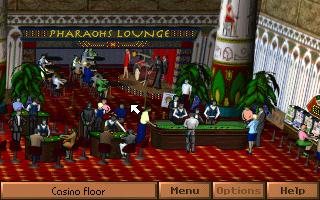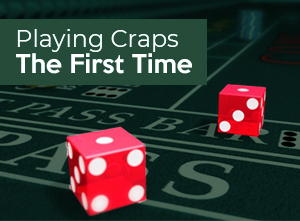Craps Tournament Strategy
Beginning gamblers often shy away from the craps table because the game looks complicated. It’s actually easy to play craps because the math keeps everyone honest. A rule of thumb to live by in any casino game is “the more they pay the less likely you are to win the bet”. Hence, there is no shame and a lot of wisdom in playing a conservative craps strategy. Here is a look at 12 secrets every craps player should learn to improve their game.
- Craps Tournament Strategy The winner of the Craps tournament is the person who finishes with the most chips. Normally there’s a specific time period for the tournament, which can be set to either 1 hour or 100 bets (or something else). The most important rule for playing well in online Craps tournaments is to check what other players are doing.
- That means the other 80% of the craps tournaments that I entered saw a very quick first-round exit, so consider yourself PRE-WARNED about the volatility. On the positive side however, the 20% of the tourney’s where I did place in the top three, fueled gargantuan amounts of prize-money winnings that made the 80% losing-rate a downright.
- The best craps strategy begins with finding a regular table. If your casino only offers crapless craps, then you’re going to be at a major disadvantage. The second step to perfect craps strategy is making either a pass line or don’t pass line bet and backing it with odds. As explained earlier, odds bets don’t have a house edge.
Craps Strategy for Playing Craps Here at the Crapspit, we encourage our readers to share their craps-playing stories, including their favorite craps systems and strategies such as the iron cross craps for playing the game.
1. Why are Casino Dice Special?
Casinos use transparent dice because they hide no flaws. Opaque dice can be manufactured to varying standards and can hide balancing flaws. Unbalanced dice do not roll randomly.
And casinos replace their dice often. Casino dice have machine-tooled straight edges. These edges eventually wear down, accumulating imperfections. Imperfections add bias to rolls.
Casino dice are larger and straighter than board gaming dice because players must throw the dice so far on a craps table. The felt top and lining help the dice bounce more randomly than a smooth table top does.
So while you may be practicing your die throws at home, you’re not going to get the same action as at a casino, especially if you never replace your practice dice.
2. How the 5-Count System Works

Since 1994 craps players have debated whether the Captain’s 5-Count system is legit. This system tells you when to bet on a shooter other than yourself. Here are the 5 counts:
- Any point on the Come Out roll roll.
- Any good roll after the 1st Count roll.
- Any good roll after the 2nd Count roll.
- Any good roll after the 3rd Count roll.
- The first point rolled after the 4th Count roll.
You begin placing low bets on the shooter after he hits his 5th Count roll. If he never gets there then you never bet on that shooter. Never bet big on another shooter.
The 5-Count method reduces the number and size of bets you place on other shooters, thus reducing your overall risk. The downside of using the 5-Count method is that you watch more than play, but betting on a drunk guy to throw dice the way you want is a pretty risky bet.
3. You Can Stop the Game for a Dispute
Sometimes the dice roll funny, or maybe you’re not sure you were paid correctly. Before the dice are thrown again, if you are certain something is wrong, you can stop the game. You can ask the dealers to recount or reconsider or, if you disagree with their decisions, ask to speak to the pit boss. This is an option of last resort when you are sure you are right. Casinos want to keep the table in play and will work to resolve disputes quickly but they’ll also ask troublesome or argumentative players to leave.

Stopping play is a mix of courtesy, privilege, and right. It’s not a gambling strategy, at least not a winning one.
Blackjack Tournament Strategy Chart
4. The More Bets You Place the Worse Your Chances of Winning
This is true in any table game, but some craps players love to place multiple bets. You’re taking on more risk, not spreading the risk, when you place several bets at the same time.
5. Know the Die Roll Probabilities
In a completely random game the chances of any given number on either die being rolled is 1 in 6. The chance of rolling any combination of numbers on the dice is 1 in 36. This “1 in 36” number can mislead you. There are only 11 possible values (2 through 12) that you can roll.
“7” is the most frequent die roll combination. There are 6 ways to roll a “7”. Some writers say there are three ways to roll a “7”: 1 and 6, 2 and 5, or 3 and 4. However, the math has to account for each die separately; hence, the probability of rolling a “7” in craps is 1 in 6.
In declining order of probability, the possible combinations in craps are:
- 7 (1 in 6)
- 6 or 8 (5 in 36)
- 5 or 9 (4 in 36)
- 4 or 10 (3 in 36)
- 3 or 11 (2 in 36)
- 2 or 12 (1 in 36)
6. The “Pass” Bet is More Likely to Pay on Come Out than the “Don’t Pass” Bet
Both Pass and Don’t Pass pay even money so you can bet either way. Still, when you look at the probability table above, the shooter has 8 chances in 36 of rolling 7 or 11 on the Come Out roll and 3 chances in 36 of rolling a 2 or 3. If you are just hoping to win on the Come Out roll, go with the “Pass” bet.
7. The 6 and 8 Points Pay the Most over Time
The 6:5 odds for the 6 and 8 points are the worst and the 2:1 odds for the 4 and 10 points are the best. But the probabilities are best for the 6 and 8 and worst for the 4 and 10.
The premium on a 6:5 payoff for 6 or 8 is 20% over your bet. The premium on a 3:2 payoff for a 5 or 9 is 50% of your bet. The premium on a 2:1 payoff for a 4 or 10 is 100% of your bet. In a perfect distribution of 36 die rolls your expected total premiums are:
- 5 * 20% = 100% (betting on 6 or 8)
- 4 * 50% = 200% (betting on 5 or 9)
- 3 * 100% = 300% (betting on 4 or 10)
Although the 300% ROI for 4/10 looks great there is a slight edge for 6/8 bettors. Because you are losing all those other bets, you lose the least amount of money with the 6/8 points. Note also that multiplying (bets + premiums) by expected wins across the board results in a 600% return. The distribution with the fewest losses is the way to bet.
8. The More Complicated Your Strategy the More Risk You Take
The more you have to think about where your money goes, the odds and probabilities, and when you can bet, the more likely you will make a mistake. High risk strategies pay off less often than low risk strategies. Most experts agree that the long, slow game works best in craps, especially for non-expert players. Keep your money on the Pass Line until you’re way ahead.
9. Avoid Hedge Bets
Ignore dealer calls for “any craps” bets. Your expected return declines your risk grows when you hedge bets. “Any craps” betting is a bet on a bet. This just adds conditions to your Pass Line bet. The strategic way to gamble is to minimize risk while maximizing potential return on bet. The house will drain your bankroll any way it can and hedge bets are a favored gimmick.
10. Use the Tower of Hanoi Method to Manage Your Betting
The Tower of Hanoi is a math puzzle about moving stacks of disks among three pegs. You can never place a disk on a smaller disk. The Tower of Hanoi rule assumes you are willing to lose everything in your bankroll. To conserve your money and manage risk, begin by making minimum bets. Increase your bets only when your bankroll is above its starting value.
Many craps players only risk 5% of their stakes on any bet. The 5% method works well enough but you’ll eventually run into the table minimum. The Tower of Hanoi method starts with the minimum bet as a floor, not 5%. As long as your bankroll is growing you can increase your bets toward the table maximum.
Blackjack Tournament Strategy Youtube
11. Never Return to Your Starting Stake
Let’s say your betting strategies have paid off enough that you have doubled your money. Once you reach that goal you should set a new floor. Walk away from the table if your stake drops to 150% of your original bankroll. This way you walk away a winner.
But there is another reason to do this. If you play any game too long you become tired, especially if you have been drinking. Your decision-making suffers when you are tired. Take “winner’s breaks” as often as possible so that you can give your brain a chance to rest.
12. The House Edge is not Determined by the Odds
Some gamblers assume the house loses more money on the basis of the odds on a given bet. It doesn’t work that way. The game is designed to pay about the same over time on any basic bet but to dilute your return with extra bets. In other words, the house edge is determined by the math behind the game. The odds are just what they are willing to pay you to maintain that edge over time.
Conclusion
Craps is a fine game for any gambler who enjoys taking risks, but you do need to understand the game. Fortunately, craps is designed for players of all experience levels. You don’t have to play all the different types of bets. And isn’t it interesting that the best strategies favor beginner-level bets anyway?